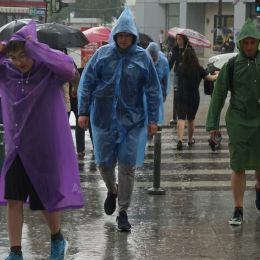ArcelorMittal has unveiled a wide job cut and production reduction plan at Galati steel plant. The program brings new changes in white-collar staff, distribution of personnel and production.
As for the management, unconfirmed information signal a reduction of number of directors, and their distribution scheme will be changed, ArcelorMittal choosing a profit-centered management over capacity-centered administration. The plan could affect many steel plant directors who will be laid off.
The plan addresses to blue-collar staff, where the company plans to implement the concept of workforce mobility and massive job cut. “Mister Ionel Bors (human resources manager) said that through the reorganization program, some 10,000 workers will be downsized by 2012”, said Gheorghe Tiber, quoted by NewsIn.
The company initially planned to slash 10,000 jobs by 2014, as Augustine Kochuparampil, CEO ArcelorMittal Galati said in a statement in May 2008. A largely white-collar workforce will leave the plant this year, as the company unveiled on December 12 a voluntary redundancy scheme, valid through March 31. Around 1,850 workers signed up on the lists, and 500 of them have received the permission to leave, receiving redundancy pay of 10,000 to 25,000 lei or equivalent to 24 pay packages, including benefits.
The workers who remain at the steel plant already feel the breeze of the economic crisis. After being sent to temporary layoff for ten days until the end of February, people will have to bear new anti-crisis measures. “As the forced ten-days layoff measure is not enough for the cost cut scheme, the management of the company proposed three variants. The first one is negative vacation that consists in ten-day vacation in the account of 2010. The second variant consists in temporary layoff by rotation, the workers following to receive 75% of the salary. The third option is keeping workers on duty and setting up a short-time working program, namely four days per week”, said Gheorghe Tiber.
Citeste si:
Calculator Salariu: Află câți bani primești în mână în funcție de salariul brut »
Te-ar putea interesa și:


















































































![HR [PLAY] Tech Workout - 11...](https://www.wall-street.ro/image_thumbs/thumbs/973/973fe0a3888d417feff63de42e814180-260x260-00-65.jpg?v=1714048757)









